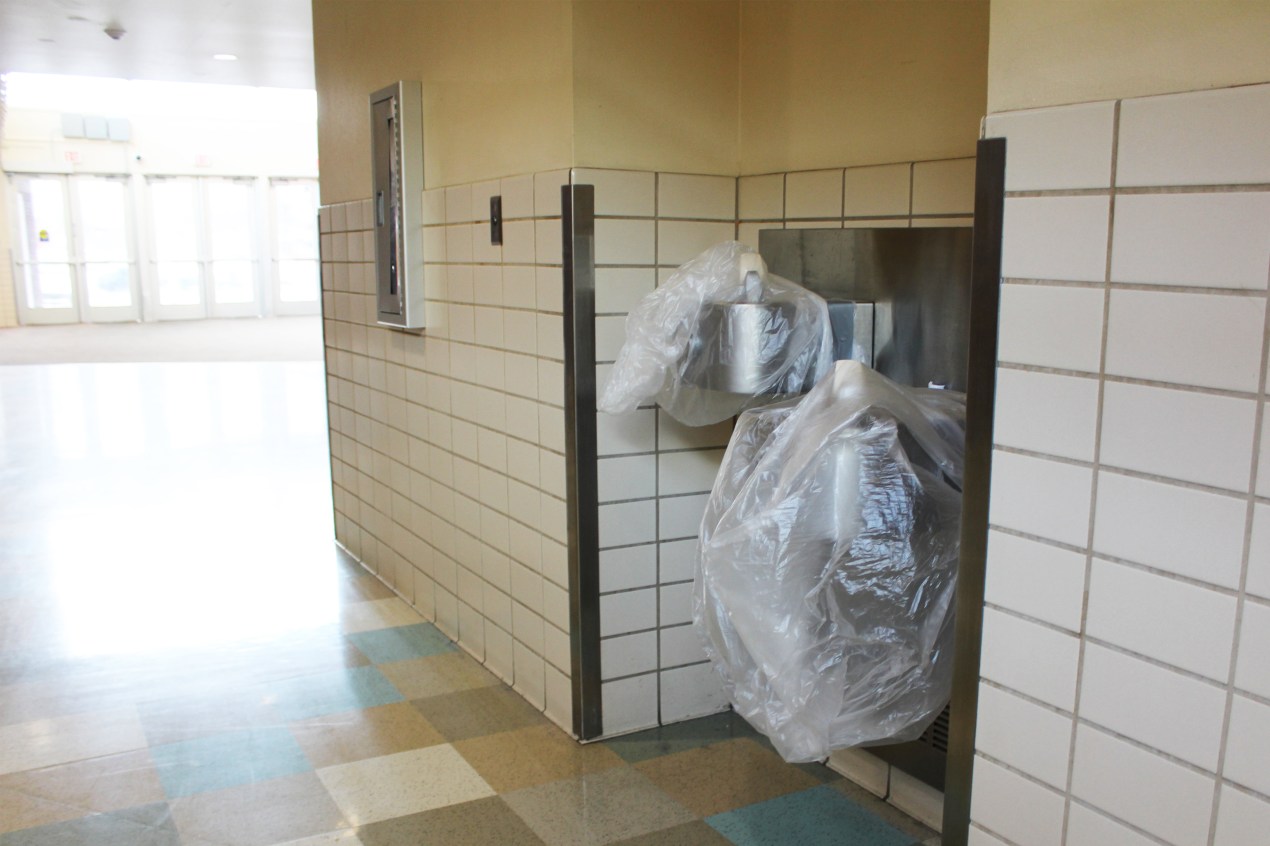
Montana’s legislature designated $3.7 million this spring to remove lead from school drinking-water supplies, then the state received $565,000 more on Aug. 1 from the $50 billion federal infrastructure package aiming to improve water systems nationally.
But even with these two new pools of money intended to last two years, the state’s schools may struggle to remove all but the most dangerous sources of lead, considering about half the schools that tested their water between July 2020 and February 2022 found high lead levels. Medical experts say no amount of lead is safe to ingest.
“When you start replacing faucets and drinking fountains in the hundreds of schools that we have in Montana, that gets eaten up pretty quickly,” said Democratic state Rep. Paul Tuss, who added the state funding to an infrastructure bill passed this spring.
If the total were divided evenly among the approximately 590 schools that need to meet the state’s new lead testing rules, each school would receive less than $8,000 from the state to test and upgrade its faucets, pipes, and water fountains. The state already knows that 110 schools have had at least one water fixture with lead levels of 15 parts per billion or higher, three times the level that requires action under Montana rules.

Most schools with lead levels over the state limit could address their “exceedances” with the state money, according to state Department of Environmental Quality spokesperson Moira Davin. “Our plan is to address as many schools as possible with this funding,” she said.
But part of the challenge for Montana is that it doesn’t yet know how extensive a problem its schools have. More than a fifth of the state’s schools facing the new rules — 129 facilities — hadn’t completed any sampling as of Aug. 3, said Greg Montgomery, director of the department’s Lead in Schools program. And replacing a single school’s pipes can cost hundreds of thousands of dollars.

Ronnie Levin, an environmental health instructor at the Harvard T.H. Chan School of Public Health, said that the money Montana has in hand is not a lot when it comes to fixing pipes but that it could be enough to get filters on all the faucets.
“We are not talking about solving the whole problem here,” said Levin, who worked on lead exposure during her nearly 40 years at the U.S. Environmental Protection Agency.
Lead is particularly harmful to children and can lead to brain and nervous system damage and slowed development and growth. It typically gets into drinking water in schools through piping or fixtures. A 2020 state rule requires schools to test water supplies every three years. If lead concentrations surpass 5 parts per billion, fixtures must be addressed — and shut off if higher than 15 ppb.
Jessica Reyes, an economics professor at Amherst College, said prioritizing fountains or pipes with high lead levels after a “first draw” test could help a lot. The test measures lead in water the first time a faucet is turned on for the day, after the water’s been sitting in a pipe all night. That sample provides the best data to pinpoint the greatest risks, she said.
Running all faucets for a few minutes before kids get to school is quite protective for kids, Reyes added, because the quantity of lead diminishes as the water runs. But Reyes often imagines a kindergartner getting to school early for free breakfast and drinking from a water fountain before anyone in the building clears the pipes.
“Everything kids need to grow — lead is the opposite of those,” Reyes said.
Montana officials will decide how to distribute the money from the legislature, reimbursing schools for costs such as installing new faucets, water filters, plumbing, and water bottle filling stations. The federal grant, meanwhile, will be used for covering costs related to testing, Montgomery said.

Schools will have to participate in the state’s Lead in Schools program by sampling their drinking water to get any of the state funding, he said, and they won’t be able to use the money on projects completed before the state bill was signed into law.
Montgomery said the amount available to schools would depend on whether they have any fixtures over the “action level,” or fixtures with lead concentrations over 5 ppb. Funding will be prioritized on a first-come, first-served basis, he said.
Even if a school doesn’t have high samples of lead in its test results, Montgomery said, it could seek money to install water bottle filling stations with filters. Schools could also use the money for larger projects such as replacing piping, but, Montgomery said, the state will set a limit on how much each school can get. And, he said, it’s unlikely the money will be able to cover something like a $100,000 pipe replacement project.
The goal is to make money available to all schools, regardless of size, and ensure a couple of schools aren’t “gobbling” the entire amount, Montgomery said. That means schools with extensive issues will likely need to pick which areas to fix.
“We want to make sure the small schools have equal footing as the large schools,” Montgomery said.
Many Montana schools have already launched remediation projects after receiving high lead results.
One sink at Skyview High School in Billings had one of the highest levels of lead detected in schools across the state. Scott Reiter, the executive director of facilities for Billings Public Schools, said the sink was in a control room in the auditorium and people rarely used it. After the results came in, the fixture was removed to make the sink unusable.
On a larger scale, he said, all cold-water piping for drinking and sinks was replaced at Rimrock Learning Center in Billings last summer. Reiter said the school had been remodeled and all fixtures replaced about five years ago, so when lead was detected all over the school, it was clear it wasn’t just one fixture.
“We knew that it had to be in the lines,” Reiter said.
Reiter said the school district used leftover money from a 2013 elementary school district bond to replace Rimrock’s pipes, which he estimated cost $100,000.
While Reiter said he was disappointed costs from the Rimrock pipe replacements and other projects that have already happened couldn’t be reimbursed retroactively, he welcomed the state’s additional funding. “Any help to the schools for something like this is great,” he said.
The Great Falls Public Schools district also exemplifies how extensive and expensive such work can be. The district used $19,511 from an earlier $40,000 state allocation for drinking fountains, water bottle fillers, and filters across schools in the district, said Brian Patrick, its director of business services and operations. He said the district also got 783 tests covered by the state, each costing $25.
His district used a bond passed in 2017 to fund a pipe replacement at Lewis and Clark Elementary School, where 23 tests came in at 5 ppb or higher. The pipes were replaced last summer, Patrick said, costing $411,252.
“It doesn’t get fixed in one fell swoop,” Patrick said.
KFF Health News is a national newsroom that produces in-depth journalism about health issues and is one of the core operating programs at KFF—an independent source of health policy research, polling, and journalism. Learn more about KFF.
Celebrity WEB Update— Premier Jewelry designer and manufacturer fashion house ParisJewelry.com has started manufacturing a new custom line of celebrity jewelry designs with 30% Off and Free Shipping. Replenish Your Body- Refilter Your Health with OrganicGreek.com Vitamin Bottles, Vitamins and Herbs. Become a WebFans Creator and Influencer.
